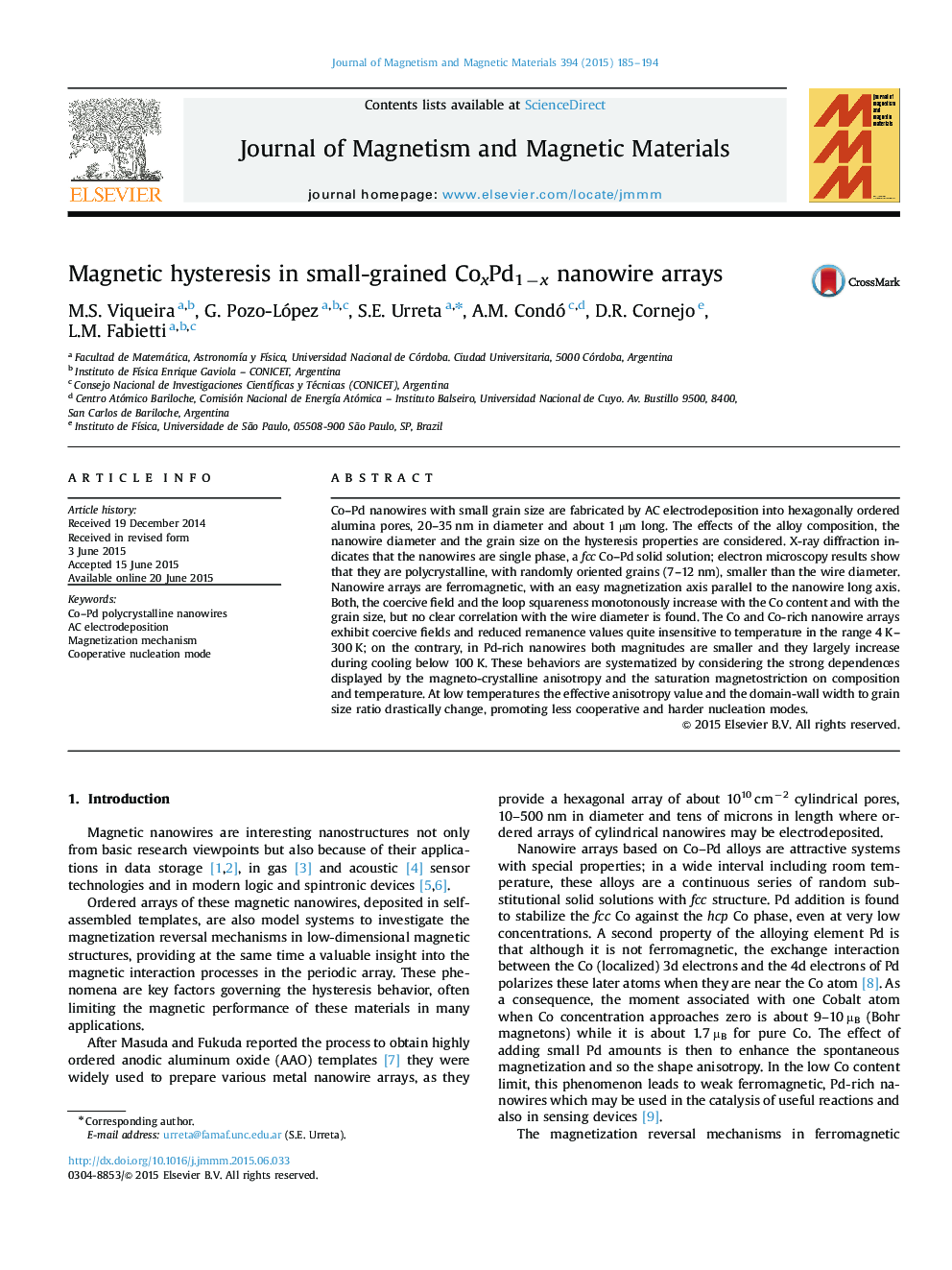| Article ID | Journal | Published Year | Pages | File Type |
|---|---|---|---|---|
| 1798980 | Journal of Magnetism and Magnetic Materials | 2015 | 10 Pages |
•Polycrystalline Co–Pd nanowires, 20–35 nm diameter, 5–12 nm grain size are synthesized.•Coercivity (14–80 mT) and squareness mainly depend on composition and grain size.•Different contributions to the effective anisotropy are considered.•Strong temperature and composition dependence of the nucleation localization is found.
Co–Pd nanowires with small grain size are fabricated by AC electrodeposition into hexagonally ordered alumina pores, 20–35 nm in diameter and about 1 µm long. The effects of the alloy composition, the nanowire diameter and the grain size on the hysteresis properties are considered. X-ray diffraction indicates that the nanowires are single phase, a fcc Co–Pd solid solution; electron microscopy results show that they are polycrystalline, with randomly oriented grains (7–12 nm), smaller than the wire diameter. Nanowire arrays are ferromagnetic, with an easy magnetization axis parallel to the nanowire long axis. Both, the coercive field and the loop squareness monotonously increase with the Co content and with the grain size, but no clear correlation with the wire diameter is found. The Co and Co-rich nanowire arrays exhibit coercive fields and reduced remanence values quite insensitive to temperature in the range 4 K–300 K; on the contrary, in Pd-rich nanowires both magnitudes are smaller and they largely increase during cooling below 100 K. These behaviors are systematized by considering the strong dependences displayed by the magneto-crystalline anisotropy and the saturation magnetostriction on composition and temperature. At low temperatures the effective anisotropy value and the domain-wall width to grain size ratio drastically change, promoting less cooperative and harder nucleation modes.
